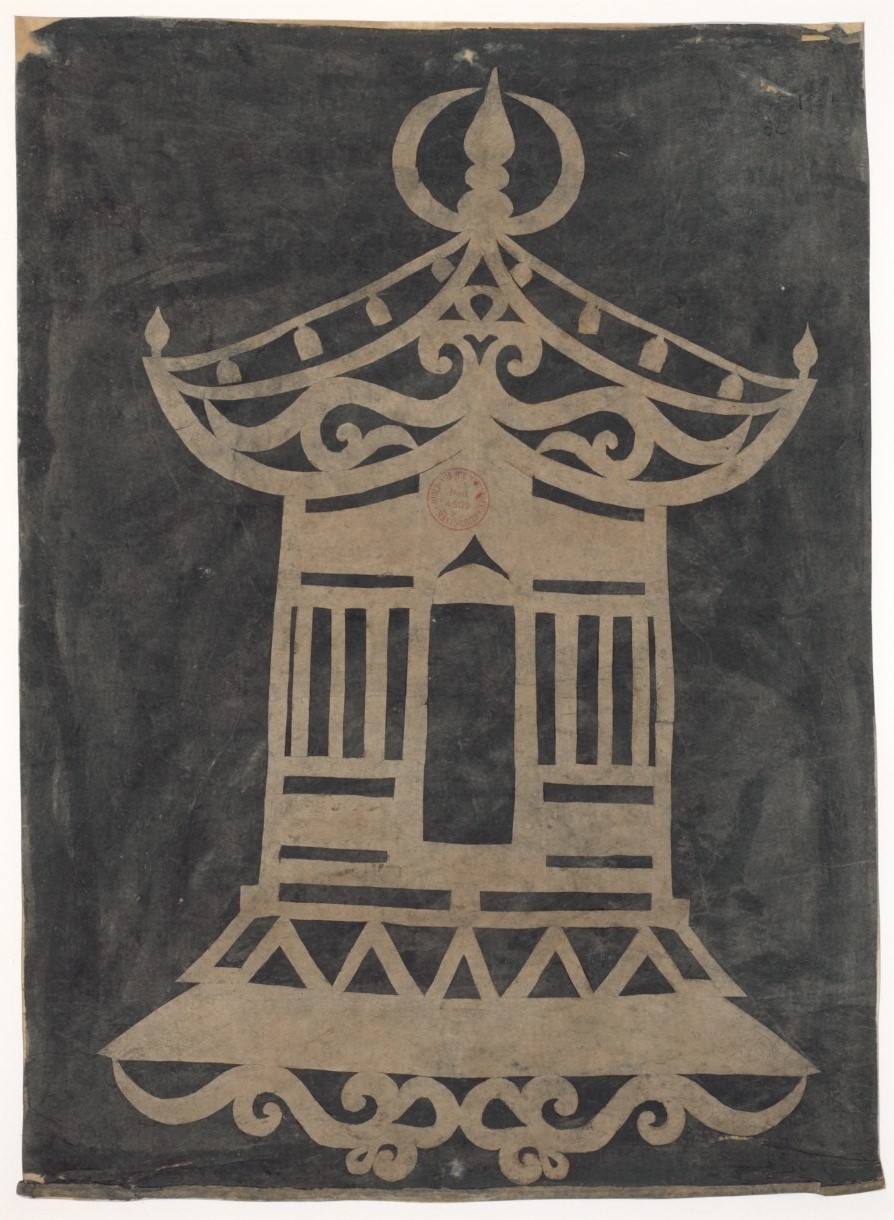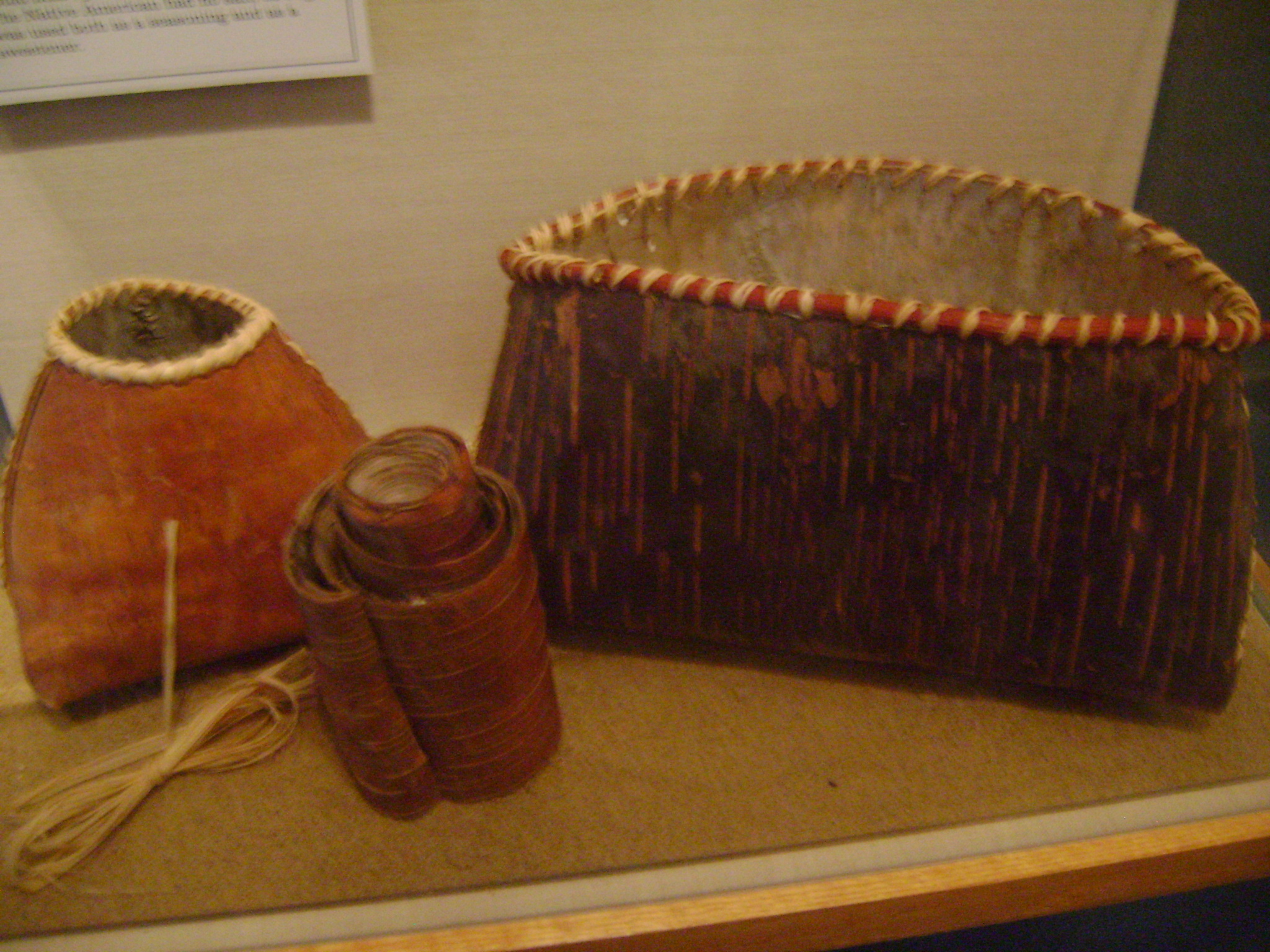|
Mazinibaganjigan
Birchbark biting (Ojibwe: Mazinibaganjigan, plural: mazinibaganjiganan) is an Indigenous artform made by Anishinaabeg, including Ojibwe people,Indigenous Perspectives of North America: A Collection of Studies'. Cambridge Scholars Publishing; 20 August 2014. . p. 210–. Potawatomi, and Odawa, as well as CreeNative American Almanac: More Than 50,000 Years of the Cultures and Histories of Indigenous Peoples'. Visible Ink Press; 18 April 2016. . p. 1273–. and other Algonquian peoples of the Subarctic and Great Lakes regions of Canada and the United States. Artists bite on small pieces of folded birch bark to form intricate designs. Indigenous artists used birchbark biting for entertaining in storytelling and to create patterns for quillwork and other art forms. In the 17th century, Jesuits sent samples of this artform to Europe, where it had been previously unknown. The practice remained common in Saskatchewan into the 1950s. Name Birchbark biting is also known as ''mazinashkwemaga ... [...More Info...] [...Related Items...] OR: [Wikipedia] [Google] [Baidu] |
Kelly Church
Kelly Jean Church ( Match-e-benash-she-wish Potawatomi/Odawa/Ojibwe) is a black ash basket maker, Woodlands style painter, birchbark biter, and educator. She lives in Michigan. Background Kelly Jean Church, a fifth-generation basket maker, was born in 1967. She grew up in southwestern Michigan. Her mother is of English and Irish heritage, and her father is of Potawatomi, Odawa, and Ojibwe heritage. Church studied the Odawa language from her paternal grandmother and learned black ash basketry from her father, Bill Church, and cousin, John Pigeon. She, in turn, has taught her daughter, Cherish Parrish ( Gun Lake Band Potawatomi). Church has completed an AFA degree at the Institute of American Indian Studies and a BFA degree at the University of Michigan. Artwork Basketry Along with her family, Church harvests her own trees in swampy areas of rural Michigan. Preparing the materials takes far longer than the weaving. She removes the bark from the felled log and then splits apart ... [...More Info...] [...Related Items...] OR: [Wikipedia] [Google] [Baidu] |
Birch Bark
Birch bark or birchbark is the bark of several Eurasian and North American birch trees of the genus ''Betula''. For all practical purposes, birch bark's main layers are the outer dense layer, white on the outside, and the inner porous layer (cambium). For vast majority of crafts, the outer bark is used. In many languages it has a separate name. For example, in Russian "birch bark" is "beryozovaya kora", while the outer birch bark is "beryosta". The strong and water-resistant cardboard-like outer bark can be easily cut, bent, and sewn, which has made it a valuable building, crafting, and writing material, since pre-historic times. Today, birch bark remains a popular type of wood for various handicrafts and arts. Birch bark also contains substances of medicinal and chemical interest. Some of those products (such as betulin) also have fungicidal properties that help preserve bark artifacts, as well as food preserved in bark containers. Collection and storage Removing birch ... [...More Info...] [...Related Items...] OR: [Wikipedia] [Google] [Baidu] |
Anishinaabeg
The Anishinaabe (alternatively spelled Anishinabe, Anicinape, Nishnaabe, Neshnabé, Anishinaabeg, Anishinabek, Aanishnaabe) are a group of culturally related Indigenous peoples in the Great Lakes region of Canada and the United States. They include the Ojibwe (including Saulteaux and Oji-Cree), Odawa, Potawatomi, Mississaugas, Nipissing, and Algonquin peoples. The Anishinaabe speak , or Anishinaabe languages that belong to the Algonquian language family. At the time of first contact with Europeans they lived in the Northeast Woodlands and the Subarctic, and some have since spread to the Great Plains. The word means . Another definition is , meaning those who are on the right road or path given to them by the Creator Gitche Manitou, or Great Spirit. Basil Johnston, an Ojibwe historian, linguist, and writer, wrote that the term's literal translation is or . The Anishinaabe believe that their people were created by divine breath. The word is often mistakenly considere ... [...More Info...] [...Related Items...] OR: [Wikipedia] [Google] [Baidu] |
Papercutting
Papercutting or paper cutting is the art of paper designs that has evolved all over the world to adapt to different cultural styles. One traditional distinction most styles share is that the designs are cut from a single sheet of paper as opposed to multiple adjoining sheets as in collage. History Paper-cut art appeared during the Jin dynasty in 4th century AD, after the Chinese official Cai Lun invented paper in 105 AD. The oldest surviving paper cutout is a symmetrical circle from the 6th-century Six Dynasties period, found in Xinjiang, China.Needham, Joseph. Chemistry and Chemical Technology. [1974] (1974). Cambridge University Press. Papercutting continued to be practiced during the Song dynasty, Song and Tang dynasty, Tang dynasties as a popular form of decorative art. By the eighth or ninth century papercutting appeared in West Asia, in Europe it appeared after the 13th century–even as late as the 16th century (with Swiss and German scherenschnitte [see also sil ... [...More Info...] [...Related Items...] OR: [Wikipedia] [Google] [Baidu] |
Wiigwaasi-makak
A wiigwaasi-makak (plural: ''wiigwaasi-makakoon''), meaning "birch-bark box" in the Anishinaabe language, is a box made of panels of birchbark sewn together with watap. The construction of ''makakoon'' from birchbark was an essential element in the culture of the Anishinaabe people and other members of the Native Americans and First Nations of the Upper Great Lakes, particularly in the regions surrounding Lake Superior. Birchbark ''makakoon'' continue to be crafted to this day as heritage heirlooms and for the tourist trade. Lake Superior-area geology is short in supplies of clay, making pottery scarce for the people who lived there. However, the paper birch grows in profusion in this area, and sheets and panels of its strong, papery bark can be cut and carved from a tree for use. Birchbark boxes played a key role in creating durable packages and utensils for storage and everyday use. Skilled harvesting of the bark, done at the proper season of the year, does not fatall ... [...More Info...] [...Related Items...] OR: [Wikipedia] [Google] [Baidu] |
Wigwam
A wigwam, wikiup, wetu (Wampanoag), or wiigiwaam (Ojibwe, in syllabics: ) is a semi-permanent domed dwelling formerly used by certain Native American tribes and First Nations people and still used for ceremonial events. The term ''wikiup'' is generally used to refer to these kinds of dwellings in the Southwestern United States and Western United States and Northwest Alberta, Canada, while ''wigwam'' is usually applied to these structures in the Northeastern United States as well as Ontario and Quebec in central Canada. The names can refer to many distinct types of Indigenous structures regardless of location or cultural group. The wigwam is not to be confused with the Native Plains tipi, which has a different construction, structure, and use. Structure The domed, round shelter was used by numerous northeastern Indigenous tribes. The curved surfaces make it an ideal shelter for all kinds of conditions. Indigenous peoples in the Great Lakes–St. Lawrence Lowlands resided ... [...More Info...] [...Related Items...] OR: [Wikipedia] [Google] [Baidu] |
Knife
A knife (: knives; from Old Norse 'knife, dirk') is a tool or weapon with a cutting edge or blade, usually attached to a handle or hilt. One of the earliest tools used by humanity, knives appeared at least Stone Age, 2.5 million years ago, as evidenced by the Oldowan tools. Originally made of wood, bone, and stone (such as flint and obsidian), over the centuries, in step with improvements in both metallurgy and manufacturing, knife blades have been made from copper, bronze, iron, steel, ceramic, and titanium. Most modern knives have either fixed or folding blades; blade patterns and styles vary by maker and country of origin. Knives can serve various purposes. Hunters use a hunting knife, soldiers use the combat knife, scouts, campers, and hiking, hikers carry a pocketknife; there are kitchen knives for preparing foods (the chef's knife, the paring knife, bread knife, cleaver), table knife (butter knives and steak knives), weapons (daggers or switchblades), knives for throwing o ... [...More Info...] [...Related Items...] OR: [Wikipedia] [Google] [Baidu] |
Canoe
A canoe is a lightweight, narrow watercraft, water vessel, typically pointed at both ends and open on top, propelled by one or more seated or kneeling paddlers facing the direction of travel and using paddles. In British English, the term ''canoe'' can also refer to a kayak, whereas canoes are then called Canadian (canoe), Canadian or open canoes to distinguish them from kayaks. However, for official competition purposes, the American distinction between a kayak and a canoe is almost always adopted. At the Olympics, both conventions are used: under the umbrella terms Canoe Slalom and Canoe Sprint, there are separate events for canoes and kayaks. Culture Canoes were developed in cultures all over the world, including some designed for use with sails or outriggers. Until the mid-19th century, the canoe was an important means of transport for exploration and trade, and in some places is still used as such, sometimes with the addition of an outboard motor. Where the canoe play ... [...More Info...] [...Related Items...] OR: [Wikipedia] [Google] [Baidu] |







